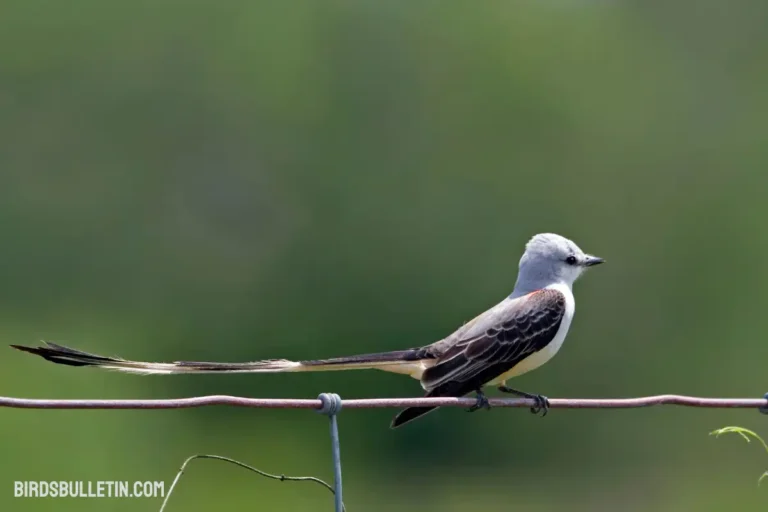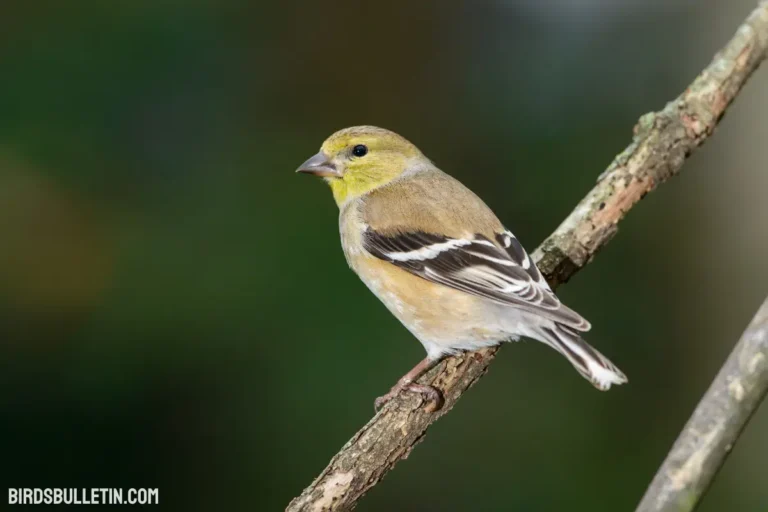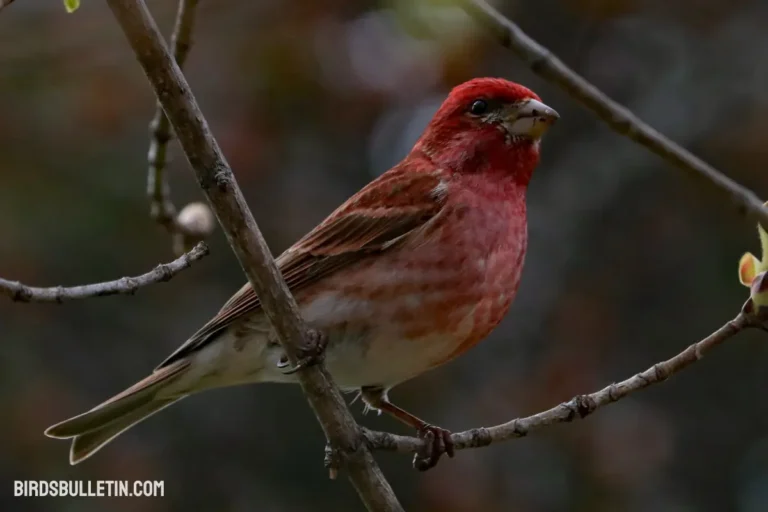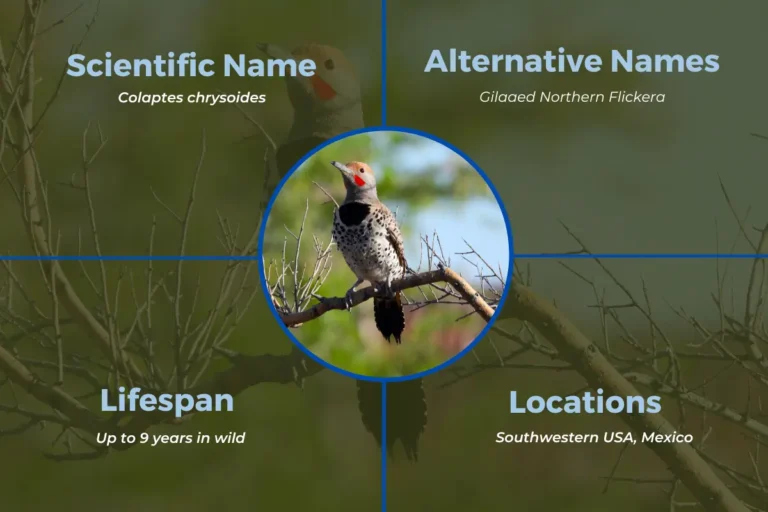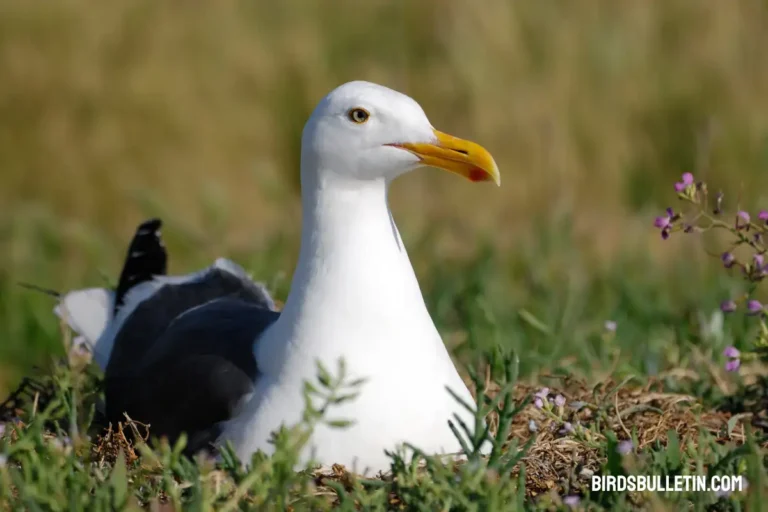Baltimore Oriole: Nesting And Behavior
The Baltimore Oriole’s vibrant orange and black plumage makes it one of the most iconic backyard birds in North America. With a flute-like song, this migratory songbird captivates birdwatchers across its eastern range.
As a state bird and mascot for sports teams, the Baltimore Oriole inspires pride and delight across its habitat. This article provides an in-depth look at this beautiful songbird.
Want to learn more about Birds Overview
How To Identify The Baltimore Oriole Step-By-Step
Identifying the Baltimore oriole is usually straightforward thanks to the male’s bright orange plumage. Here are the key identification points:
01. Orange and black coloration: Adult male Baltimore orioles have jet-black heads, wings, backs, and tails contrasting sharply with bright orange breasts, bellies, shoulders, and rumps.
02. White wing bars: Both sexes have white wing bars on their otherwise black wings. This is a key feature to separates them from similar oriole species.
03. Bill size and shape: Baltimore orioles have a pointed, cone-shaped bill approximately 1 inch long. This bill is perfect for piercing fruit and accessing nectar.
04. Song: The song of the Baltimore oriole is a melodious whistling including clear whistles, chips, and chattering notes. Songs are useful to confirm identification.
Baltimore Oriole Profile
| Feature | Description |
|---|---|
| Scientific Name | Icterus galbula |
| Alternative Naames | Northern oriole, golden oriole, Oreos, O’s |
| Color | Males have black heads, wings, orange breasts, bellies, shoulders, and rumps. Females are paler and yellow-green. |
| Size | 17–22 cm (7–8 in) |
| Wingspan | 23–33 cm (9–13 in) |
| Weight | 33 g (1.15 oz) |
| Lifespan | Up to 11.5 years in the wild, recorded longevity up to 14 years. |
| Breeding Season | From the onset of April to the conclusion of May |
| Eggs Laid | 4-6 per clutch |
| Diet and Prey | Insects, fruit, nectar |
| Threats and Predators | Habitat loss, pesticides, squirrels, cats, snakes |
| Locations | Breeds in eastern North America, winters in Central America and northern South America |
State Bird And Symbol
The Baltimore oriole holds the distinction of being the state bird of Maryland. It was designated the state bird in 1947 due to its shared name with the city of Baltimore. Beyond Maryland, it is also the state bird of Bulacan, a province in the Philippines.
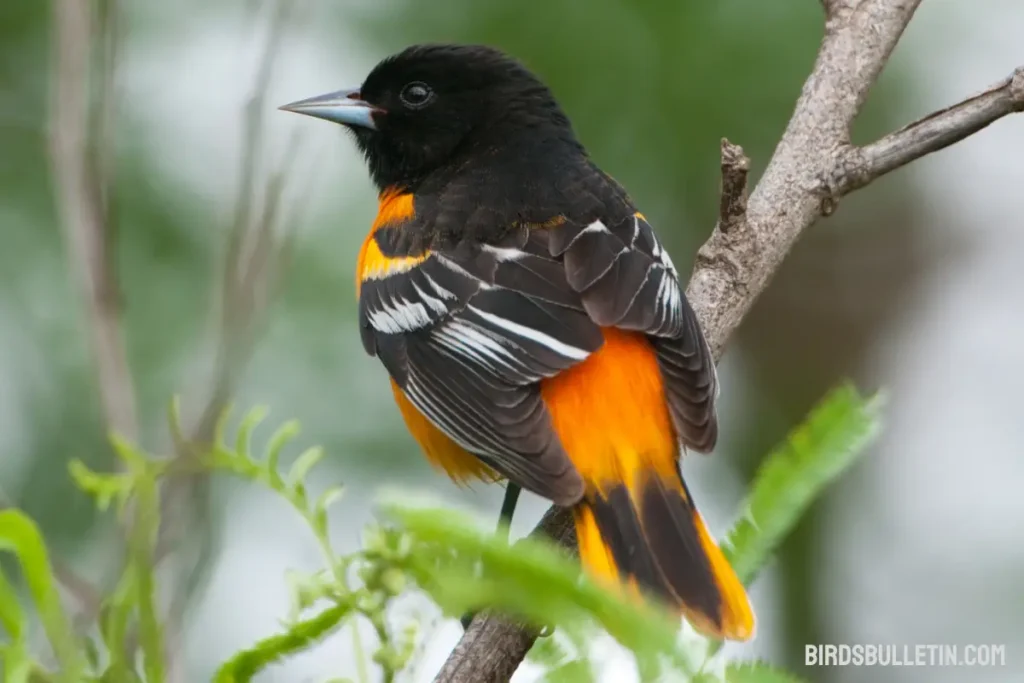
In addition to being Maryland’s state bird, the Baltimore oriole appears in the state flag and seal. It symbolizes the state colors of orange and black. The Baltimore oriole represents the cultural heritage and pride of Maryland.
Species Or Subspecies
The Baltimore Oriole is considered a monotypic species without officially recognized subspecies. However, regional color variations exist, particularly more extensive black on the heads and throats of western males compared to eastern ones.
While these differences have led to speculation about potential subspecies, they remain unclassified. Ongoing research analyzes genetic and morphological characteristics for insights into population variations.
Though unofficial, these regional distinctions contribute to understanding the species despite the lack of formal subspecies designation.
Nesting
Baltimore orioles weave hanging basket nests at the tips of tree branches. Their intricate nests are made of plant fibers, hairs, string, yarn, and other pliable materials. The female oriole constructs the nest over a period of 8-10 days.
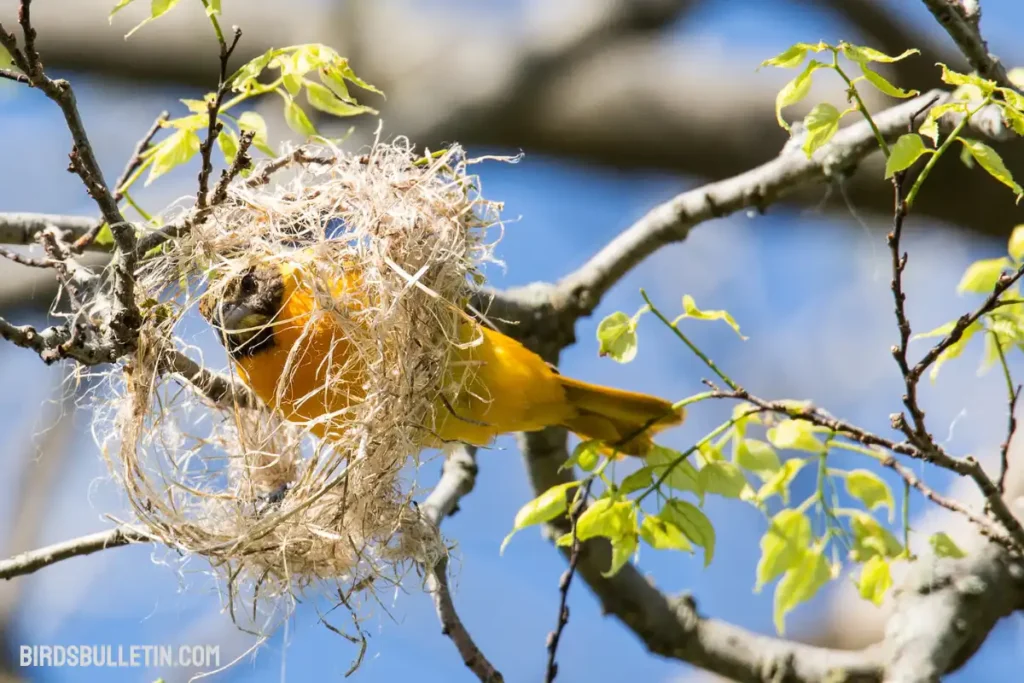
Nest placement is usually high up in deciduous trees such as elm, maple, sycamore, and oak. Orioles often place their nests on the underside of branches for protection from the elements. 3-7 eggs are laid per clutch.
Baltimore orioles may have two broods per season across their breeding range. The female incubates the eggs for 12-14 days before they hatch. Both parents feed the nestlings for a further 12-14 days until fledging.
Population And Migration
Baltimore oriole populations are generally stable though they have declined in some portions of their range. Partners in Flight estimates a global breeding population of 12 million with 79% living in the United States and 21% in Canada.
Baltimore orioles migrate huge distances to overwinter in Central America and northern South America. Their winter range extends from southern Mexico to northern Venezuela and Colombia. Northbound spring migrants typically arrive in the United States in late April and early May.
Behavior
Baltimore orioles are active, social songbirds that feed both high and low in trees. They forage for insects, spiders, fruits, nectar, and jelly made from sap. Orioles make frequent visits to feeders with orange halves, sugary syrup, mealworms, and suet.
Males sing animated songs and chase other males from their breeding territories. Though less colorful, female Baltimore orioles sing equally complex songs. Both sexes use their bills to weave intricate hanging nests.
Orioles often migrate in small flocks. By day, they rest in dense trees and call to communicate. At night, they seek protected roost sites and remain quiet.
Interactions With Humans
The Baltimore oriole is a popular backyard bird across eastern North America. Birders with fruiting trees, nectar feeders, and mealworms regularly attract these colorful songbirds. Orioles quickly warm up to new feeders and human environs.
However, Baltimore orioles face threats from habitat loss on both their breeding and wintering grounds. Agricultural intensification reduces nesting sites and food sources. Urbanization also contributes to shrinking populations in some areas.
Conservation Status
The Baltimore oriole has a large range and stable global population. According to the IUCN Red List, it is classified as a species of Least Concern. Maintaining mature forests and reducing pesticide use will help conserve oriole populations into the future.
In the United States, Baltimore orioles are protected under the Migratory Bird Treaty Act which prohibits harming or harassing them. The female and nests with eggs or young also receive special protections.
Legal Protection
Under the Migratory Bird Treaty Act (MBTA) enacted in 1918, it is illegal to harm, capture, or kill Baltimore Orioles without proper permits.
The MBTA safeguards migratory birds and their habitats, contributing to their conservation.
Frequently Ask Questions
01. How long do Baltimore orioles live?
The typical lifespan of a Baltimore oriole is 2 years. However, the maximum recorded lifespan is 12 years based on banding records. Most orioles only survive to breed once or twice due to high mortality rates both in migration and on the wintering grounds.
02. Do Baltimore orioles migrate at night?
Yes, Baltimore orioles primarily migrate at night and rest/feed in the daytime. Nocturnal migration allows them to avoid overheating and predation risks. Like many songbirds, they navigate by the stars and Earth’s magnetic field at night.
03. What sound does a Baltimore oriole make?
Baltimore orioles have loud, flute-like whistling songs. Their vocalizations include sharp “week” calls and chattering “chuck” notes. Both males and females sing complex songs that can distinguish individual birds.
Final Word
With its whistling song and brilliant orange plumage, the Baltimore oriole delivers splashes of color and energy to backyards across eastern North America each spring.
This migratory songbird has inspired sports fans, artists, state pride, and bird enthusiasts alike. Protecting forests and reducing pesticides will help ensure the continued success of this beautiful backyard visitor.
References
- Kaufman, K. Lives of North American Birds. Houghton Mifflin Harcourt, 2001.
- https://www.audubon.org/field-guide/bird/baltimore-oriole
- https://www.allaboutbirds.org/guide/Baltimore_Oriole


